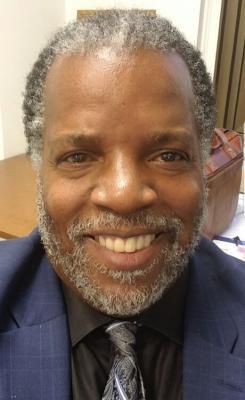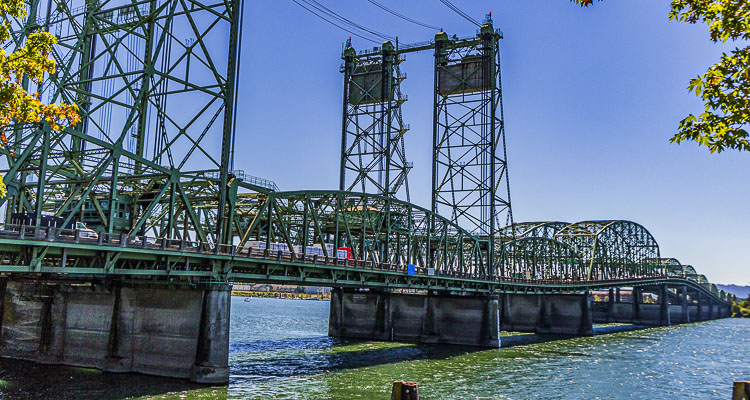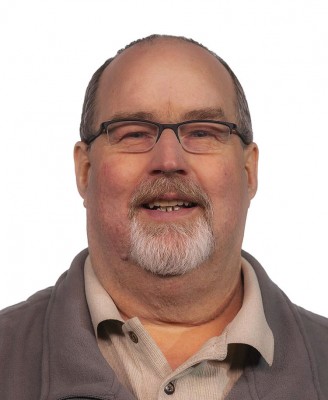Clark County Today Editor Ken Vance shares the reasons for his fear that the current attempt to create an I-5 Bridge replacement project will end in a similar fate as the CRC

Earlier this week, during a briefing of the members of the Executive Steering Group (ESG) and the Bi-State Bridge Committee of Washington and Oregon legislators, Interstate Bridge Replacement Program (IBR) Administrator Greg Johnson said his team needed more time to provide the much-anticipated “solution’’ to the Interstate Bridge Project. The solution was expected to be made public in March, but now Johnson says it won’t come until July.
Considering the fact that Johnson and his team are attempting to provide a proposed solution that will please lawmakers, citizens, interest groups and stakeholders from both states, as well have a project that threads the needle of requirements for federal funding, at first glance a delay of three months doesn’t move most needles of suspicion or concern. However, it does continue to reinforce a fear that I have held, essentially, since the IBR program was created in 2019.
After eight years of planning that spent an estimated $200 million, the Columbia River Crossing (CRC) failed in July 2013 due to Republican opposition in the Washington State Senate. The Senate vote was just the final nail in the coffin. There were obviously many other factors that led to the failure of the CRC. Nevertheless, it meant that all that time and public money was spent and virtually nothing was accomplished.

So, several years later, the IBR Program picked up the baton and attempted to restart the race. The goal was not only to seek an I-5 Bridge replacement project agreeable to all involved, but to also prevent $140 million in federal funding allocated for the CRC from being recalled (the deadline for which has been extended to 2025).

It should be noted that Washington’s portion of that was reportedly $46 million. Ironically, Washington lawmakers approved $35 million for the IBR Program. And, because the IBR Program is handcuffed to the CRC’s Environment Impact Statement and the original Purpose and Need statement, that has presented several challenges for this current effort. I’m not so sure we wouldn’t have been better off just paying back the $46 million, which is only a net savings of $11 million. That way we could have started off with a fresh project.
My fear has always been that the current attempt to create an I-5 Bridge replacement project will end in a similar fate as the CRC. It is my opinion that the CRC failed for many reasons including the fact that it didn’t accurately reflect the will of the people here in Washington when it comes to issues like tolling, light rail and a measurable improvement in traffic congestion. Therefore, Washington lawmakers faithful in their service to their constituents blocked the $3.5-billion project at the last minute.
Earlier this month, Johnson gave me more than an hour of his time to have a discussion about his team’s efforts. He may have been half a country away at the time, but Johnson was then, and is now, well aware of the CRC failure. Johnson is the point person assigned with the Herculean task I described above.
The personable, seemingly capable and confident Johnson would like to be able to report that he arrived in 2019 just in time to save the day and prevent a repeat of the failed conclusion of the CRC project.
“I’d love to tell you it’s because Greg Johnson is here in town,’’ he joked. “But, I’m not going to do that.’’
Johnson served as deputy director of the Michigan Department of Transportation during some of the timeline of the CRC project.
“When I was at the Michigan DOT, I heard that this failed the first go round,’’ Johnson said. “It had some national reverberations. Why would they not want to replace, at that time, a 90-some-year-old bridge? I scratched my head, set it aside, and said ‘they will get to it. It will get fixed.’’
But as the years followed and that fix never came, Johnson’s interest was piqued.
“I heard this thing isn’t done yet,’’ he said. “It put a seed in my brain that I need to know how this thing could get done. So, when the opportunity came for me to come out here, I did.’’
Johnson said he has worked on controversial projects before, including a bridge between Detroit and Canada.
“That was not only two communities, but it was two different countries,’’ Johnson said. “So these things are of interest to me. I helped set the groundwork for that thing moving forward successfully.’’
Don’t mistake Johnson for being over-confident, or lacking perspective of the task he has at hand.
“This is a big deal,’’ he admitted, after suggesting that “folks need to take a step back and look at this in a bigger context. This just isn’t a bridge that connects Portland to Vancouver. It connects Washington to Oregon. It connects the West Coast. It connects Mexico to Canada … Because everybody has lived with this so long, they become a little bit myopic about what this really is. This is a bigger deal for folks outside of this area than you guys think it is. There was just a quote in The New York Times that referenced this bridge.’’
The two-year IBR Program effort spent nearly $21 million through the end of August. One quarter of that ($5.3 million) has been spent on “communication,” as dozens of community outreach sessions have been held. Johnson said the fact that his team is seeking and receiving that input and feedback is what makes him confident this latest attempt to replace the I-5 Bridge won’t end in failure like the CRC did.
“The reason why I think it is going to be successful is that we are talking to folks, we are getting a lot of input,’’ Johnson said. “And, I think folks are getting their hands wrapped around this. That this is important. This is a big deal. And the economic ramification of this failing is just too large. That is the case that we’re making.’’
When he and Oregon Gov. Kate Brown signed a Memorandum of Intent to create the latest replacement effort, Washington Gov. Jay Inslee said: “This bridge could fall down any day, with a small seismic event. We do not have a choice, we have to replace this bridge.’’
In our recent discussion, Johnson told me he is not trying to run a fear campaign. However, essentially, he does agree with Inslee.
“The consequences are just too big for us to miss another cycle of this not happening,’’ Johnson said. “I think that folks understand that if it doesn’t happen this time, the likelihood is that bridge will be at the bottom of the Columbia (River). And then, somebody will come in and give you guys what they think you want, rather than what you actually want. So, I tell folks, don’t let perfect be the enemy of good. And, in this case, the enemy of very good. Doing nothing just isn’t a solution here. I can’t live with doing nothing.’’
Unlike Johnson, I CAN live with doing nothing if it prevents wasting the estimated $3.2-4.8 billion in taxpayers’ money for a project that does nothing to improve traffic congestion, adds tolls for Washington commuters and other travelers and forces soon-to-be-wasted forms of public transportation on area residents, the majority of whom have consistently said they don’t want it and mounting evidence suggests will be largely underutilized.
As I mentioned earlier, the IBR Program has spent a great deal of time and effort, not to mention more than $5 million in expenses, to get input and feedback from members of the public, stakeholders, interest groups and elected officials from both states. I asked Johnson for examples of how all that input and feedback has impacted his team’s vision for the eventual solution.
“So one of the things that we heard on both sides of the river was the importance of climate and the future of how this bridge may impact climate change,’’ Johnson told me. “And, so we brought on a principal climate officer that reports directly to me. Her duty is to see what Washington state has, as far as state law, what the regional partners have on their books for their climate goals, and the same on the Oregon side. As we move forward, it’s one of the key things that we’ve heard, that we’ve incorporated into this project.
“The same with equity,’’ Johnson added. “We’ve looked at and heard from both sides that there’s a history of some inequitable outcomes. So first, we have to know about them. And then we have to talk about how we can either mitigate or how we can change those impacts going forward. So, so those are things that have impacted how his program moves forward.’’
I shared with Johnson that in the time of the CRC and the IBR program, my estimate is that I’ve written more words and stories about transportation issues, traffic congestion and the I-5 Bridge replacement than any other topic. And, during that time, I’ve obviously had many, many conversations with citizens, stakeholders and elected officials. I told him that never once has the topics of climate change and equity come up in those conversations. As I said before, the hot topics are always traffic congestion, tolls and public transportation. If you want to add one more to that list is the fact that many of us prefer the creation of a third crossing over the Columbia River prior to the I-5 Bridge replacement.
There were many more aspects of this effort that Johnson was gracious enough to provide me thoughtful and insightful answers to. When possible, Clark County Today will share some of those other details with our readers.
I want to make it clear, as I have before. I am not against a project to replace the I-5 Bridge. It needs to be done, but it needs to be done right. And, it is my belief that it should only come after a third crossing/corridor is built. (In Johnson’s defense, that’s not a factor in the task he’s been given by the governors of the two states).
Earlier I referred to Johnson’s assigned task as “Herculean.’’ Part of me thinks it’s an impossible one. I don’t know if there is a human alive capable of getting Washington and Oregon lawmakers to agree on a project that both states will share in the funding of. And, in addition to that, meet all the criteria necessary to qualify for federal funding.
So, when it comes to my long-held concerns that this project is destined to end in a similar fate as the CRC, nothing that was said during my hour-plus-long conversation with Johnson assuaged that fear.





I guess I’m confused. Why do you “fear” an outcome that the people of Clark County want? It costs too much, is a black hole for any other transportation project in the region and, of course, the onset of the totally unneeded and unwanted loot rail.
So, contrary to “fearing” that outcome… I pray for it.
You know that he project giving too much power to idiots when the project says: “So one of the things that we heard on both sides of the river was the importance of climate”
The average person puts Al Gore’s climate scam at the bottom of ther list of concerns. Right along with spending $400 million on bikes & pedestrians like the previous project planned to do. Or another $400 million on the toy train.
Look at real data and recognize the fact that the “climate crisis” is the biggest scam in human history!
Here are some true climate facts:
• There has been less than one degree of warming from 1850 to 2012
• There is no evidence that hurricanes have increased
• There is no evidence that storms have increased
• There is no evidence that sea level rise has increased
• There is no evidence that floods have increased
• There is no evidence that droughts have increased
• Man emits 6% of CO2 emissions, nature 94%
• CO2 causes ONLY about 1/3 of the warming.
• It is not possible to predict future climate.
(Evidence is below)
Fact is that there is nothing unusual about today’s climate and thus nothing to explain with man’s CO2. This well respected source debunks several popular lies about climate:
Here are Quotes & Facts from the IPCC (which is considered the bible of climate), NASA & the Bulletin of the American Metrological Society.
(You may have read other claims from the IPCC, usually from the Summary For Policy Makers without knowing that the summary is actually a political document written, word by word, by politicians from many countries including those looking for cash handouts. The below is from the science part of the report.)
1. Earth only warmed 0.78 degree C up to 2012.
“Using Had-CRUT4 and its uncertainty estimates, the warming from 1850–1900 to 1986–2005 (reference period for the modelling chapters and Annex I) is 0.61 [0.55 to 0.67] C (90% confidence interval), and the warming from 1850–1900 to 2003–2012 (the most recent decade) is 0.78 [0.72 to 0.85] C (Supplementary Material 2.SM.4.3.3).”
Pg. 209 of https://www.ipcc.ch/site/assets/uploads/2018/02/WG1AR5_all_final.pdf
2. Man emits about 6% of total emissions.
Add the numbers on this NASA diagram: https://earthobservatory.nasa.gov/features/CarbonCycle/page1.php
3. CO2 causes only about 26-32% of the greenhouse effect. H2O causes 60-75%.
https://en.wikipedia.org/wiki/Greenhouse_effect#Greenhouse_gases which is based on Table 3 of: Bulletin of the American Meteorological Society Vol. 78, No. 2, February 1997 –
http://journals.ametsoc.org/doi/pdf/10.1175/1520-0477%281997%29078%3C0197%3AEAGMEB%3E2.0.CO%3B2
4. We do not have enough data to say that hurricanes have increased.
“Confidence remains low for long-term (centennial) changes in tropical cyclone activity, after accounting for past changes in observing capabilities.”
pg 178 of https://www.ipcc.ch/site/assets/uploads/2018/02/WG1AR5_all_final.pdf
5. We do not have enough data to say that storms have increased.
“Confidence in large-scale trends in storminess or storminess proxies over the last century is low owing to inconsistencies between studies or lack of long-term data in some parts of the world (particularly in the SH). {2.6.4}”
pg 178 of https://www.ipcc.ch/site/assets/uploads/2018/02/WG1AR5_all_final.pdf
6. No evidence that normal sea level increase has accelerated.
(Note that sea levels have been rising since the end of the last ice age – the issue is whether it is rising faster.)
“When a 60-year oscillation is modeled along with an acceleration term, the estimated acceleration in GMSL since 1900 ranges from: 0.000 [–0.002 to 0.002] mm yr–2 in the Ray and Douglas (2011) record, 0.013 [0.007 to 0.019] mm yr–2 in the Jevrejeva et al. (2008) record, and 0.012 [0.009 to 0.015] mm yr–2 in the Church and White (2011) record. Thus, while there is more disagreement on the value of a 20th century acceleration in GMSL when accounting for multi-decadal fluctuations, two out of three records still indicate a significant positive value. The trend in GMSL observed since 1993, however, is not significantly larger than the estimate of 18-year trends in previous decades (e.g., 1920–1950). “
Page 306 of https://www.ipcc.ch/site/assets/uploads/2018/02/WG1AR5_all_final.pdf
7. No evidence that floods have increased (per IPCC)
“AR4 WGI Chapter 3 (Trenberth et al., 2007) did not assess changes in floods but AR4 WGII concluded that there was not a general global trend in the incidence of floods (Kundzewicz et al., 2007). SREX went further to suggest that there was low agreement and thus low confidence at the global scale regarding changes in the magnitude or frequency of floods or even the sign of changes.”
pg 230 of https://www.ipcc.ch/site/assets/uploads/2018/02/WG1AR5_all_final.pdf
8. No evidence that droughts have increased
“Confidence is low for a global-scale observed trend in drought or dryness (lack of rainfall) since the middle of the 20th century, owing to lack of direct observations, methodological uncertainties and geographical inconsistencies in the trends.”
pg 178 of https://www.ipcc.ch/site/assets/uploads/2018/02/WG1AR5_all_final.pdf
9. Prediction of future climate is not possible.
“The climate system is a coupled non-linear chaotic system, and therefore the long-term prediction of future climate states is not possible. “ https://www.ipcc.ch/ipccreports/tar/wg1/501.htm (IPCC third Assessment Report (2001) Section 14.2.2.2, page 774) and Page 771, https://www.ipcc.ch/site/assets/uploads/2018/03/TAR-14.pdf
This shows that THERE IS NO CLIMATE EMERGENCY.
Also see: http://www.debunkingclimate.com/arguements.html
http://icecap.us/index.php/go/political-climate/alarmist_claim_rebuttals_updated/
Hello Jim! Thanks for your thoughtful post. I hope to reply to some of your thoughts – please know I am not trying to put you down or say you are dumb. I know you are as smart as I am or as anyone else.
My first thought is that whether or not climate change is real – I’m not sure you can say the ‘average person is not concerned about climate change.
This Pew Research article shows that 52% of Americans are interested in prioritizing policies on mitigating the impacts of climate change. https://www.pewresearch.org/fact-tank/2020/04/21/how-americans-see-climate-change-and-the-environment-in-7-charts/
Second thought is – thank you for your links regarding climate science! They are interesting. I haven’t had a chance to look at them all, but I had a few thoughts if you are open to hearing them (I hope you are!)
I hope that I communicated those thoughts alright. Either way, I hope that you consider these in good faith – I want to have a discussion here. I’m not trying to attack you.
Here’s a reminder for Greg Johnson:
The CRC data showed:
Approximately 81,000 people make round trips across the river each day in cars.
Approximately 150 people make round trips on bikes each day
Approximately 30 people make round trips on foot each day
Approximately 1650 people, per day make round trips on transit.
Yet, the CRC planned two bridges – one for 81,000 people in cars and a second one for 1830 people on transit+bike+pedestrians. The plan was to spend a $800 million on each bridge – $9,900 for each person in a car and $437,158 for each of the others. Yet only the car users were to pay a toll! In a fair project they would pay about the same for each class of user: $10,000 for each car user or about the estimated $800 million and also $10,000 for each user in the other categories, or about $18 million total for transit, bike & pedestrian accommodations.
Another reminder is DO NO NOT LIE to the people: http://www.no-tolls.com/false_claims.html
DO NOT HIDE IMPORTANT INFORMATION such as the high transit usage projections rely on Vancouver population density increasing due to development caused by light rail and the elements are separable.
The ONLY rational approach is to build the lowest cost bridge possible, probably patterned after the I205 bridge for about $500 -$600 million . This WILL NOT REQUIRE TOLLS and NOT have the crime train. It will still serve ALL of the people, its just that transit users will have to ride the bus. It will still meet all of the purpose and need statement, but without ultra deluxe treatment for a small percentage of the users. http://www.no-tolls.com/low_cost_bridges.html
Your recollection of the CRC proposed bridges is inaccurate. One bridge was for northbound traffic the other for southbound. One bridge carried light rail internally and the other the pedestrian/bicycle traffic.
The thought that the CRC proposal did not improve traffic flow is highly flawed. Northbound showed great improvement. Southbound did not show much improvement because of the Rose Quarter bottleneck. The CRC could have pretended the bottleneck would be fixed within 20 years and presented a much greater traffic flow, but they took the high road and left the bottleneck in place. There is now a proposal to improve this area which will hopefully be approved.
Allan –
The current “proposal” for the Rose Quarter will add NO new through lanes to I-5. Additionally, there is a huge number of special interest groups, including the No More Freeways and 1,000 Friends of Oregon, the bike and active transportation crowd, and more, all trying to kill or significantly reduce or eliminate altogether, the extension of auxiliary lanes at the Rose Quarter.
The project is already nearly 300% of the original projected cost. What the final project will look like remains to be seen.
But regarding the Interstate Bridge Replacement Program, administrator Greg Johnson has already said the project will not improve travel times much. He told that to the community and to Oregon Senator Lew Frederick earlier this year when Frederick specifically asked: “How much time will people save?”
John,
The CRC did not add any thru lanes either – the improvements come from the auxiliary lanes. This would be the assumption for the Rose Quarter also – no new thru lanes but shift the merging to the auxiliary lanes thereby reducing conflicts and accidents while improving thru flow.
As I mentioned, northbound traffic should see a large improvement while southbound would be at current levels in 20 years. What is being missed in this discussion is that doing nothing will see complete gridlock for umpteen more hours a day in both directions. This is unacceptable.
And guess what? We can solve any lack of improvement at the Rose Quarter with a truly elegant Portland solution. Since Portlanders love to elect politicians who think busses, bikes and light rail are the greatest travel modes in the world, the solution is to close all southbound on-ramps south of Marine Drive during the morning rush hour. This will keep the traffic volumes low enough to ensure the Rose Quarter will not back up traffic and Portlanders can utilize their beloved alternative travel modes.
Third bridge? The only one that makes sense is a west-side bypass and the chances of that happening in this day and age are slim to none. Any other bridge dumps traffic on local streets which cannot carry the volumes necessary to relieve I-5. And a bridge across the river from SR-14/192nd interchange to Sandy Blvd as proposed by Figg does little to improve the I-5 corridor and dumps traffic on a local street system. And even making a better solution by extending the improvement to I-84 at 181st interchange would only facilitate eastbound traffic which again does little for I-5. Future project? Absolutely. But for now the I-5 problem is only accelerating and needs to be solved. Hopefully the current IBR can placate narrow minded politicians and other naysayers and come to fruition.
i sure hope so, its so easy to see the problem…. we dont need to tear down an existing bridge! we need to build a third bridge! and we need to do it before we need a fourth bridge!
Many good points, Ken. I am not sure how you define “failure”. Is getting a new bridge built success? Or do you define success as meeting the aspirations of your constituents? If the former, the IBRP will succeed. If the latter, then, yes, it will be a failure. The new bridge will not reduce the transit times vary much, if any. It cannot with any of the three current proposals since they all encompass only three through lanes in each direction and only address five miles of I-5. The reason the IBRP staff has not answered this question is because they cannot. Since improved transit time is the number one priority in every survey, the goal and focus of the IBRP has to shift the focus to other areas, such as equity, not losing federal funds, and fear of seismic failure.
You desire a third river crossing, but why? With the location of PDX, where would it be? The answer lies in asking the question of how to improve the transit of people and goods along the I-5 corridor. Until this is addressed, at least for the area from Wilsonville to Ridgefield, band-aids will be the result, and opportunity will be lost and funds wasted. When Congress changes hands in 2024, the federal funds will certainly not be provided for the three blue states on the west coast. The shift will be to the southern states and the souther border. That will be the definition of failure.
It’s doubtful I 5 bridge will be replaced unless it falls into the river because it has become so politicized that neither side really cares about what works for most of the users, businesses including Interstate Commerce. While the politicians flex their muscles and mouth, the price tag soars and the taxpayers are ones hurt.
The resurrection of the CRC is a waste of time and money. The anti-car (anti-freedom) folks on both sides of the bridge want to burden it with expensive features that benefit a tiny number of potential users. (e.g. Bike and pedestrian lanes.) The “transit” option of extending a 15mph trolly car into Vancouver is simply a way for Portland to extend tax authority to pay for an expensive transit system that they can’t afford.(Note: Just wait for it, we’ll soon hear Tri-Met (and its relatives) will need to be “rebuilt” as the equipment rail lines are “worn out.”)
As for replacing the Interstate bridge, it’s pointless so long as there is no relief on adding lanes further south where there are bottlenecks (Rose Quarter, but other spots as well). While a modest improvement in northbound traffic is possible (due to the poorly planned major on-flow routes just before the bridge — the merging of major flows of new traffic just before a “visual restriction” (the superstructure of the bridge) is a common highway planner error. (I know of other instances elsewhere.) Adding a couple lanes to the northbound route would “solve” the immediate problem (of the merging traffic) but that’s hardly worth the hundreds of millions planned to be spent along with the extra burden of unwanted “public transit improvements.”
The most obvious solution is to resurrect the plans from the late 1970s where a new “western route” was proposed that would move through traffic west of the city. For a good many years, the I-205 route provided traffic relief on the east side, though it is now frequently as congested as the main I-205 route.
As a senior citizen, I’ve come to realize that I will not likely see a viable “solution” to the “bridge problem” in my lifetime, but someday, the “car haters” that control too much of what passes for city planning may ultimately give way to those who understand that traffic increases with economic activity*. Economic activity is what makes cities attractive and beneficial to live in. Failure to have roads and traffic facilities keep up with the growth eventually will cause the city to “fail” and to start losing economic activity — ultimately degrading the living standards of all in the area. (There are a lot of ghost towns “out there.”)
*Over the years, I observed that my “commute time” shortened by as much as 10-15% when the economy was bad. Often, as a recession ended, I noticed traffic increase even before “officials” announce economic conditions had improved.
Invest the money in family-wage jobs in Vancouver. Problem(s) solved!
I am posting this here, because I do not know where else it would be read.
As has been stated many times, the “Common Sense Solution” to addressing the I-5 traffic across the Columbia River will not be implemented or even given any additional consideration.
The remaining options endorsed by the IBRP bi-state legislative committee each encompass three northbound and three southbound through lanes. This is the current configuration and does not alleviate traffic congestion. The most expressed need in every survey on this topic is a reduction in transit time. None of the remaining options address this to any degree.
It is time to think outside of the box if this need is to be met given the geographic and funding constraints which govern this project. Failure to do this will result in a beautiful bridge that is seismic tolerant but does not address the region’s greatest transit issue.
One possible solution lies in the arena of controlled movement. This is not a new idea. Austin, Texas has developed freeways in this mode for decades. Perhaps there would be one or two northbound lanes that are accessed at Rosa Parks and have no egress until SR500. What about having northbound access at Marine Drive that only leads to Hayden Island? There is probably computer modeling that can determine the most efficient patterns already. I would think that, unlike the current HOV lanes, the patterns would not change based on the day of the week or the time of day in order to make it work. With good information and time, people would be able to make the adjustments.
Perhaps George Crandall and Jim Howell could consider this. Remember, time is short. The intent is to have the major decision made by June 2022.
Tom — you nailed it.
As Oregon Senator Lew Frederick asked Greg Johnson earlier this year — “How much time will people save?”
Sadly, IBRP administrator Greg Johnson and his team are paying more attention to Oregon politicians demanding “only 3 lanes” (Hardesty & Peterson) instead of to the people and what they want. And instead of being “data driven” which he has promised to do, many times.
Transportation architect Kevin Peterson has shown the I-5 corridor would need 5 lanes in each direction by 2030 and over 8 lanes in each direction by 2050. Yet he pushes “3 through lanes”, and honesty reports it will NOT save people any real time in their travels.
What a sad waste of money if it doesn’t meet the needs of the people, and ignores the real “data” and facts for transportation in the Portland metro area.